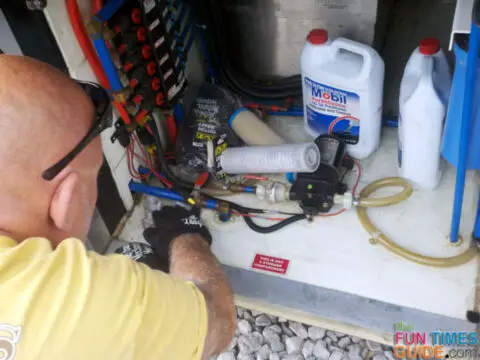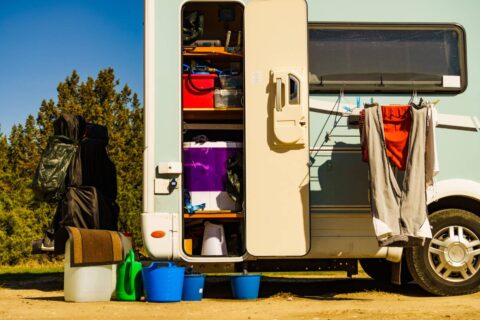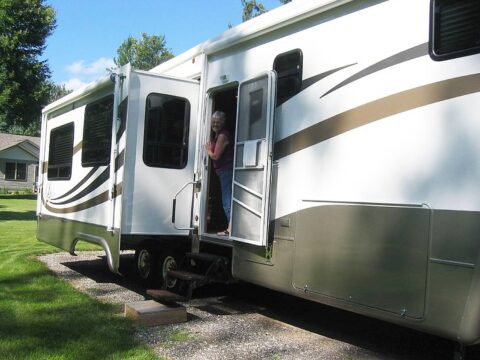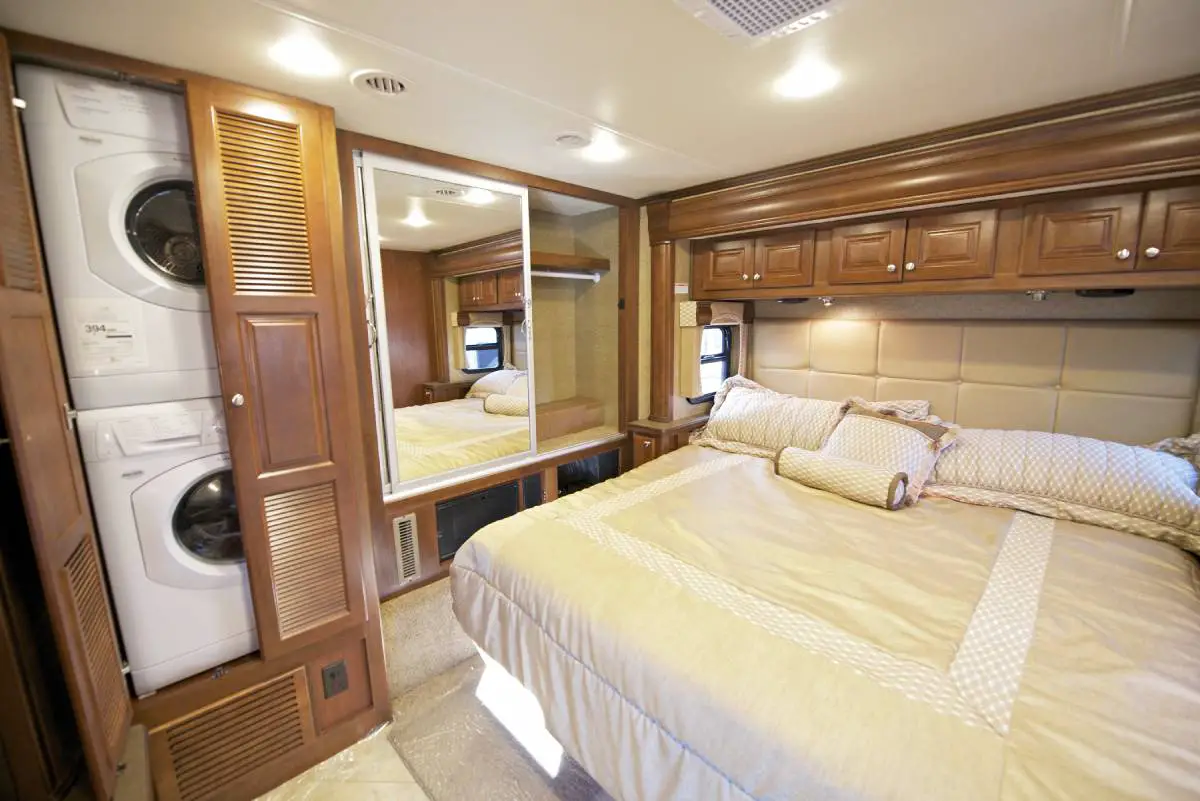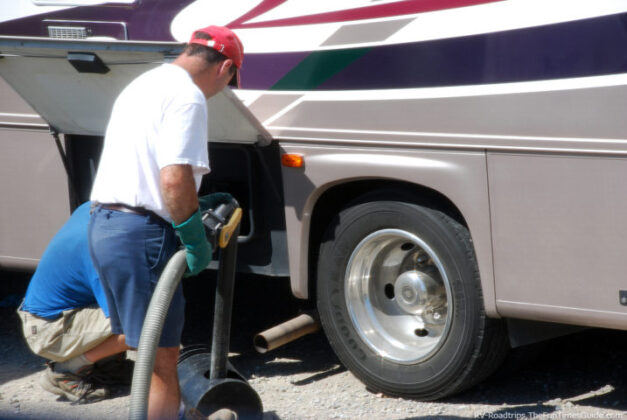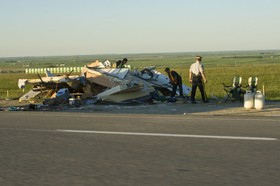 Being involved in an accident is never a good thing, especially when you’re driving a recreational vehicle.
Being involved in an accident is never a good thing, especially when you’re driving a recreational vehicle.
With emphasis placed on having the largest possible living space, while maintaining the lightest possible weight, many RVs don’t handle accidents well.
Following these few simple defensive driving techniques will greatly increase the likelihood that your RV lifestyle won’t be cut short because of an unfortunate accident that probably could have been avoided — if you had just done things a little differently.
Slow And Steady
For instance, things like tailgating, weaving in and out of traffic, and making sudden lane changes can quickly send you out of control when you’re pulling a trailer or driving a motorhome.
Just the same, quick actions can cause oversteer, taking you out of your lane.
Wind Resistance
Thanks to their generally boxy appearance, RVs provide lots of surface area for unexpected winds to send you headed in directions you’d rather not go. This can affect towing characteristics both rapidly and severely.
It’s quite possible for a large gust of wind to grab a travel trailer and drag it (and the vehicle towing it!) right off the road.
During certain times of the year in the desert southwest, these winds can be deadly. The results of an accident often leaves you with nothing more then a pile of rubble from what was minutes ago a fully rigged travel trailer.
When faced with high winds, or strong gusting winds, these 2 simple tips can help to prevent a disaster behind the wheel of your RV:
- Slow way down so that you can maintain control when a gust of wind hits your RV.
- Proceed at a greatly reduced speed until you can find a safe place to get off the road.
Letting the wind continue to strike the side of your RV could lead to unpredictable results. If a wind gusts is strong enough, it may be enough to roll you over onto your side. Yes, even when the vehicle is parked or not moving, this can still happen if the winds hit your vehicle just right.
Stopping under an overpass will give some protection from the wind, if an overpass happens to be available to you. A truck stop or large parking lot is best though. That way, you can park pointed directly into the wind.
Most of all, when the wind gets bad, you should get off the road and wait it out. Be it an hour or a couple days, it just isn’t worth the risk to try to drive an RV through strong winds.
Motorhomes and RVs are high-profile vehicles (similar to semi’s and tractor trailers) and they react to wind much differently than low-profile cars do:
Turning Radius
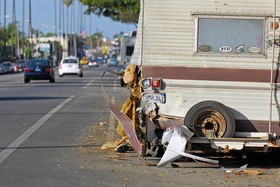 Chances are, you normally operate a family sedan during the week. Getting behind the wheel of an RV while pulling a 36-foot trailer or piloting a 40-foot coach may be something you only do when vacation time rolls around.
Chances are, you normally operate a family sedan during the week. Getting behind the wheel of an RV while pulling a 36-foot trailer or piloting a 40-foot coach may be something you only do when vacation time rolls around.
It’s easy to get out of practice maneuvering your RV in tight quarters.
Here again, clipping the rear corner of your trailer could be the unintended result if you turn too soon while passing a tree, a cement post, or some other obstruction. You may have already learned firsthand that an RV’s lightweight construction methods will offer you very little protection from damage whenever you strike something.
There is no law in the RV industry that requires the ability to survive a 2 MPH crash with no damage. With an impact you didn’t hardly even feel, you could easily take out the whole rear corner, making your RV trailer not much more than trash.
Safe close clearance maneuvering is a skill to be learned. It takes practice and doing it on a regular basis to remain good at it. These tips will help you get into a tight campsite:
- If your RV didn’t come with good side mirrors, get some. Then practice using them until you rely on them, rather than looking over your right shoulder to back up.
- Remember, if you can’t see it in the mirror, you have no idea where it is. Get out and check behind the RV before backing up. You may need to do this multiple times if you’re close to any obstruction.
- As much as possible, have someone be a spotter for you — to make sure you’re not going to hit anything. Just be sure to keep your spotter in view at all times, so you can see their signal. A pair of low-cost walkie talkies will greatly help communicating with someone who is guiding you from behind the RV.
- If you aren’t 100% sure what your spotter is trying to tell you, stop. It’s always best to get out of the RV and go check for yourself.
- Rear vision cameras are great in motorhomes, but remember that they only show you what is happening directly behind you. You can’t see the corners of your RV, so relying on the picture you see on your monitor could put you right on target for some serious damage.
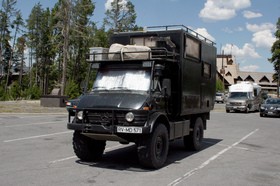 Unless you plan on using an urban assault vehicle as your next RV, learning good defensive driving techniques will go a long way in protecting you, your family, and the financial investment you have in your RV.
Unless you plan on using an urban assault vehicle as your next RV, learning good defensive driving techniques will go a long way in protecting you, your family, and the financial investment you have in your RV.
The RV lifestyle is all about relaxing and having fun. If weather or traffic conditions turn bad while you’re traveling, just get off the road and kick back until things quiet down.
Being in a hurry just isn’t worth the risk.
I’ve been involved in RVing for over 50 years — including camping, building, repairing, and even selling RVs and motorhomes. I’ve owned, used, and repaired almost every class and style of RV ever made. I do all of my own repair work. My other interests include cooking, living with an aging dog, and dealing with diabetic issues. If you can combine a grease monkey with a computer geek, throw in a touch of information nut and organization freak, combined with a little bit of storyteller… you’ve got a good idea of who I am. To date, I’ve shared my RV knowledge in over 300 articles here at The Fun Times Guide! Many of them have over 25K shares.

